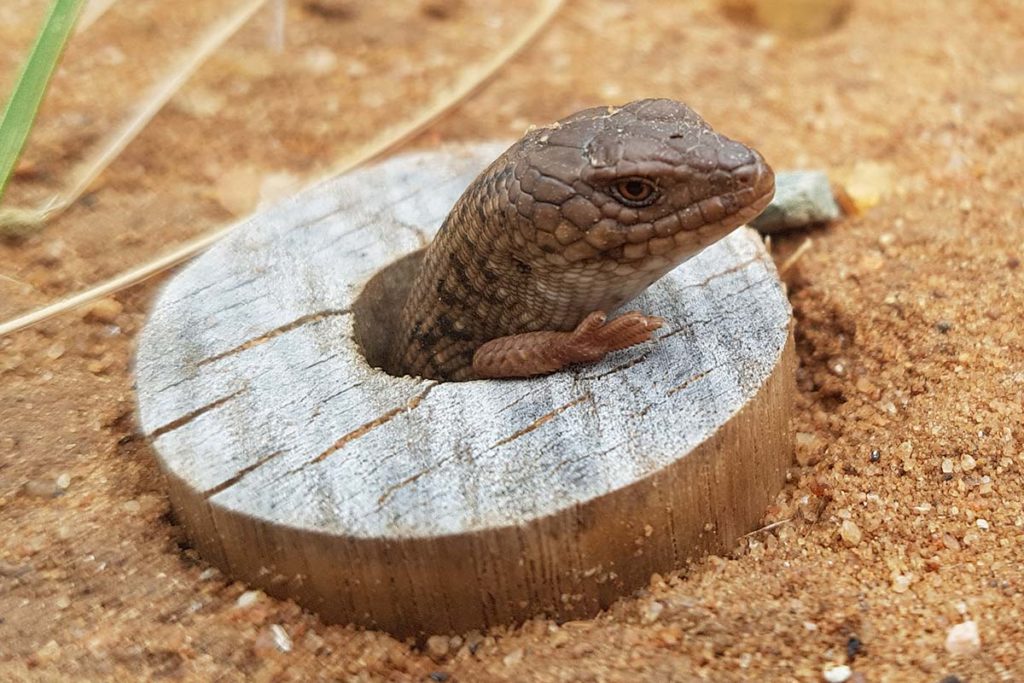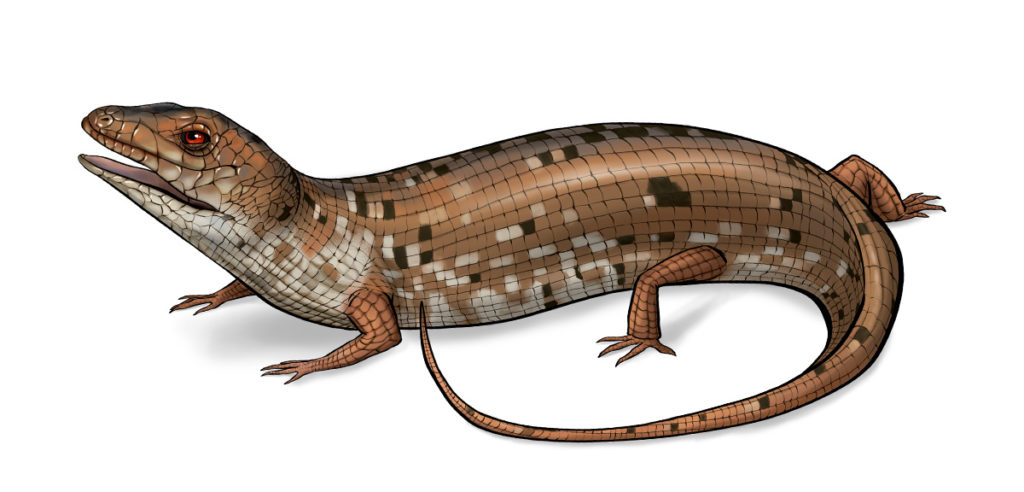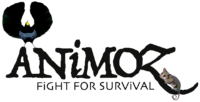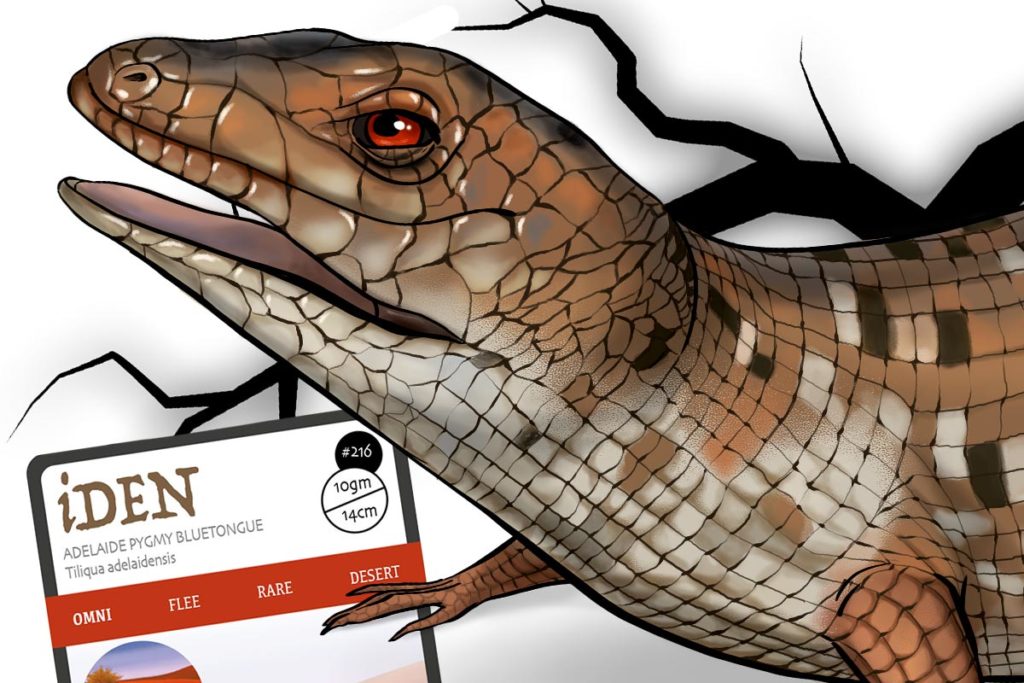The Adelaide pygmy bluetongue lizard is one of the winning species from the Aussie Wildlife Vote 2020, nominated by Zoos SA!
Here’s all you need to know about iDEN (Tiliqua adelaidensis)!
- They do not have a blue tongue! They get their name because they are a small skink in the same genus as other bluetongue lizards.
- They were thought to be extinct in the wild for 33 years until someone found one in the belly of a dead TEXTiLiS (Eastern brown snake)!
- They live in spider burrows on arid grasslands – only in areas that have never been cropped.
Was the Pygmy bluetongue lizard extinct?
In 1959, some workers on a construction at Marion in Adelaide’s south found what were thought to be the last individuals of the iDEN population. They were once common throughout suburban Adelaide and get their scientific name, Tiliqua adelaidensis, from this.
For 33 years, herpetologists believed the species to be extinct!
However, in 1992 some amateur herpetologists came across a recently dead brown snake on the side of a road near Burra in South Australia. The brown snake had a lump in it, representing a recent meal. So the intrepid herpetologists decided to cut the dead snake open to see what it had eaten. They found a small, brown skink unlike any they knew, eventually identifying it as the “extinct” Pygmy bluetongue!

So the search was on for this mysterious population of “extinct” lizards. Extensive searches of the Burra region revealed evidence of a small population of the lizards, but no one could figure out where the lizards were. After some innovative surveillance methods were used, researchers identified that the lizards were living in disused trapdoor spider (Mygalomorph spp.) and wolf spider (Lycosa spp.) burrows! The spider burrows generally have diameter 13-20 millimetres and depth up to 30 centimetres, perfect for iDEN!
Once the researchers established where the lizards lived, they had to identify any other locations with populations. The Pygmy bluetongue is quite fussy with its habitat requirements; it prefers grassland that has never been cropped and will only occupy areas up to 110 metres above sea level.
In the World of ANiMOZ, iDEN is part of the Desert BiOME.
There are now 25 known populations across South Australia’s mid-north from Port Wakefield to Peterborough. These populations are quite fragmented from each other with limited dispersal and genetic exchange opportunities. Researchers at Flinders University, Zoos SA and the Nature Foundation of South Australia are currently managing populations to ensure genetic diversity, and ensure that the populations remain stable.
How big does the Pygmy bluetongue lizard get?
We now know a lot more about the Pygmy Bluetongues and their life histories. An adult iDEN grows to around 14 centimetres long, and babies may only be a couple of centimetres long when born. The young are live-born and stay in the burrow with their mother until they are a few months old, at which time they must disperse to find their own burrows.
iDEN is orange-brown in colour and has a stocky head with large scales. Females are generally larger than males.
Most of their activity is conducted within five centimetres of their burrow.
To hunt, they use their AMBUSH Superpower: iDEN will lie in wait for insects to pass close by. They remain close to their burrow so they can quickly retreat in case they are threatened by a predator like TEXTiLiS the Eastern brown snake!
How does iDEN breed?
Mating season is the only time the Pygmies leave their burrows intentionally. Males leave to roam for females, and females create deliberate paths back to their burrows to alert males to their location.
iDEN is a promiscuous mater, meaning that females will mate with more than one male and males will mate with more than one female. They are even capable of multiple paternity; where siblings from the same litter can have different fathers.
This strategy is highly beneficial for increasing genetic diversity within populations. A litter is usually two to four young.

Because there are not many Pygmy Bluetongues around, some of the populations are being supplemented by translocations and a captive breeding program. The populations are so far apart that genetic diversity will be compromised since lizards cannot move between populations. Flinders University has set up translocation trials at Burra and are monitoring the genetic and other health consequences on the lizards. Zoos SA are also conducting a captive breeding program to try to boost population numbers!
Check back on the Headquarters website, and follow us on social media (@ANiMOZworld), because we’ll be releasing an interview with a Ranger from Adelaide Zoo in the coming weeks!
Read more species reports from ANiMOZ Ecologist, Ranger Tessa here:
Have you ever seen iDEN in the wild? Make sure to share your photos and tag #wildANiMOZ!


